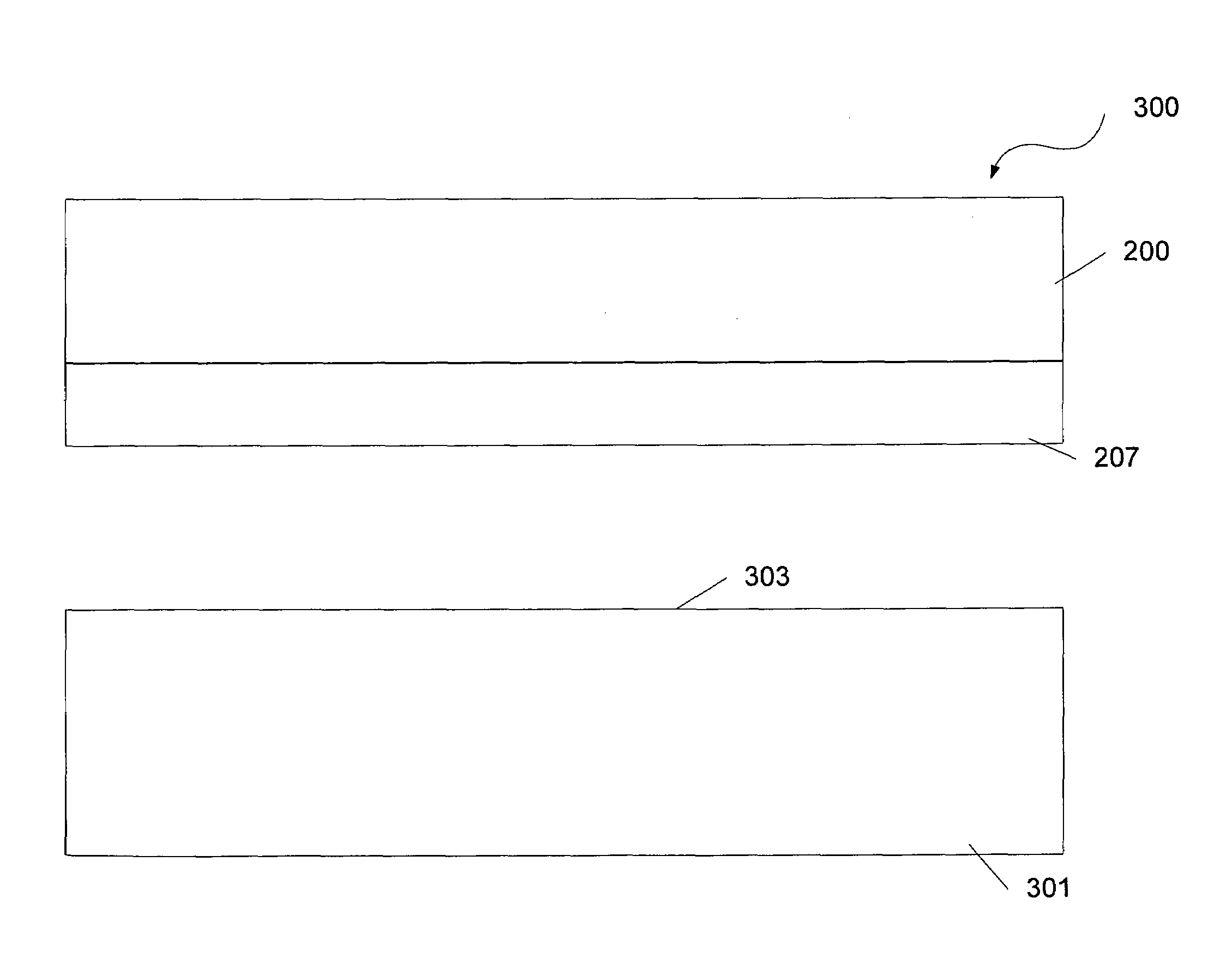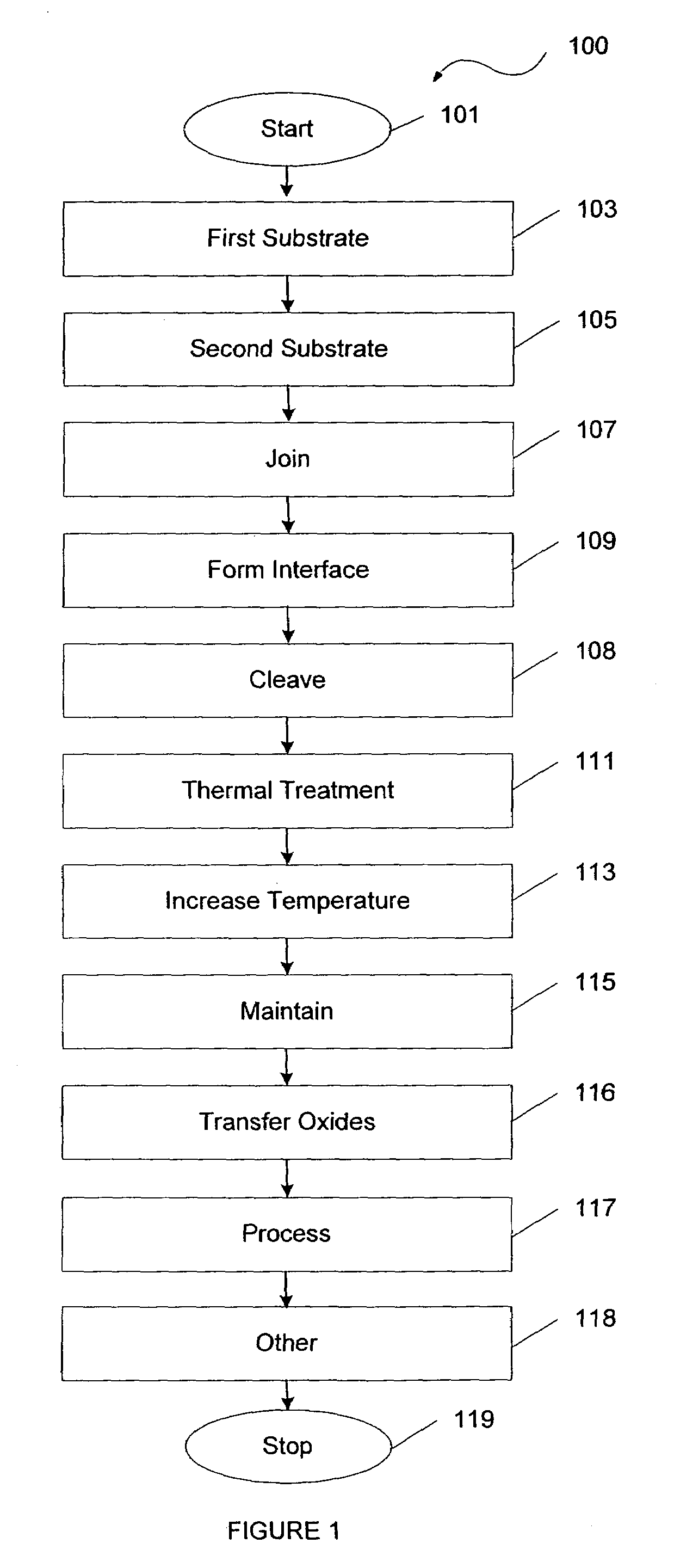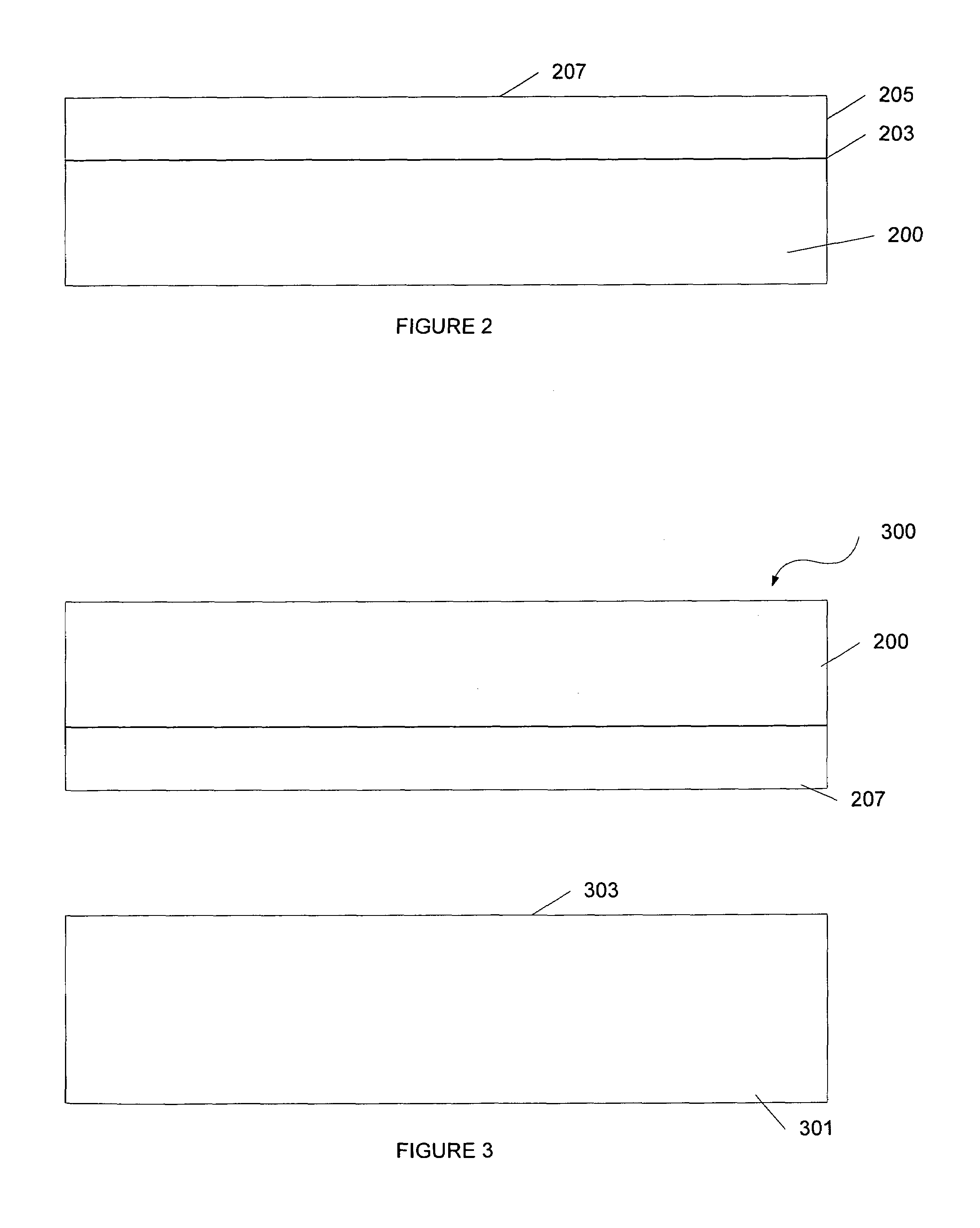Method and structure for fabricating bonded substrate structures using thermal processing to remove oxygen species
a technology of oxygen species and substrate structure, which is applied in the field of manufacturing substrates, can solve the problems of brittle materials, difficult to achieve the separation or cutting of materials that are difficult to achieve, and can not be used in the general direction of providing precision separation of substrates for the manufacture of fine tools and assemblies, etc., and achieves a wide range of applicability
- Summary
- Abstract
- Description
- Claims
- Application Information
AI Technical Summary
Benefits of technology
Problems solved by technology
Method used
Image
Examples
Embodiment Construction
[0017]According to the present invention, techniques related to the manufacture of substrates are provided. More particularly, the invention provides a technique including a method and a structure for forming multi-layered substrate structures using bonding techniques for the fabrication of semiconductor integrated circuit devices. Such bonding techniques include use of thermal processing to establish bonded interfaces that are substantially free of imperfections, defects, and / or other undesirable features according to a specific embodiment. In a preferred embodiment, the thermal processing causes oxygen species to be transferred from an interface region between a bonded pair to be removed to an outer region. But it will be recognized that the invention has a wider range of applicability; it can also be applied to other types of substrates for three-dimensional packaging of integrated semiconductor devices, photonic devices, piezoelectronic devices, flat panel displays, microelectro...
PUM
| Property | Measurement | Unit |
|---|---|---|
| thickness | aaaaa | aaaaa |
| thickness | aaaaa | aaaaa |
| temperature | aaaaa | aaaaa |
Abstract
Description
Claims
Application Information
 Login to View More
Login to View More - R&D
- Intellectual Property
- Life Sciences
- Materials
- Tech Scout
- Unparalleled Data Quality
- Higher Quality Content
- 60% Fewer Hallucinations
Browse by: Latest US Patents, China's latest patents, Technical Efficacy Thesaurus, Application Domain, Technology Topic, Popular Technical Reports.
© 2025 PatSnap. All rights reserved.Legal|Privacy policy|Modern Slavery Act Transparency Statement|Sitemap|About US| Contact US: help@patsnap.com



